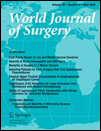Severity of Acute Cholecystitis and Risk of Iatrogenic Bile Duct Injury During Cholecystectomy, a Population-Based Case–Control Study
Abstract
Background
Acute cholecystitis is a common complication to gallstone disease. The relation between the severity of acute cholecystitis and risk of bile duct injury during cholecystectomy has not yet been addressed and is the main focus of this study.
Methods
All cases with iatrogenic bile duct injury during cholecystectomy, within the Lake Mälaren region, Sweden, were identified through ICD procedure codes for biliary reconstruction within the Swedish Inpatient Register and matched to non-injured cholecystectomized controls. Information regarding perioperative variables was collected through medical record review.
Results
After review, 158 cases and 623 controls remained for analyses. Adjusted risk of bile duct injury was doubled among patients with acute cholecystitis (OR 1.97 95 % CI 1.05–3.72), whereas a mild acute cholecystitis (Tokyo grade I) did not affect the risk of bile duct injury (OR 0.96 95 % CI 0.41–2.25), a moderate (Tokyo grade II) more than doubled the risk (OR 2.41 95 % CI 1.21–4.80). Severe cholecystitis (Tokyo grade III) had a close to significant eightfold increase in risk (OR 8.43 95 % CI 0.97–72.9). The intention to use intraoperative cholangiography reduced injury risk by 52 % (OR 0.48, 95 % CI 0.29–0.81).
Conclusions
Patients with on-going acute cholecystitis had twice the risk of sustaining a biliary lesion compared to patients without acute cholecystitis. There was a relation between the Tokyo guidelines severity grading of acute cholecystitis and injury risk and the intention to use intraoperative cholangiography halved the risk of reconstructed bile duct injury during cholecystectomy.




